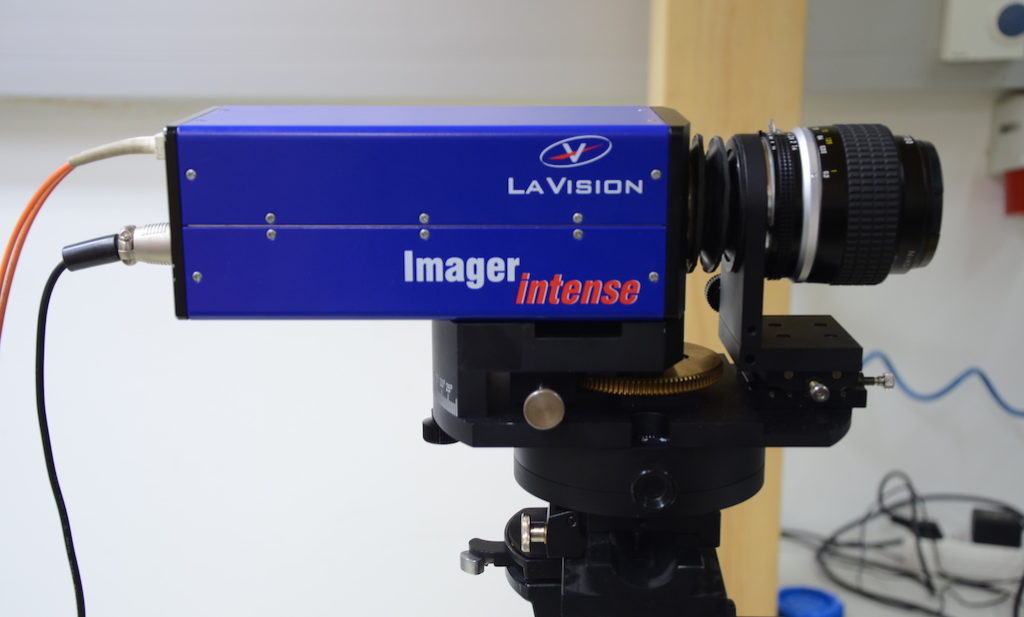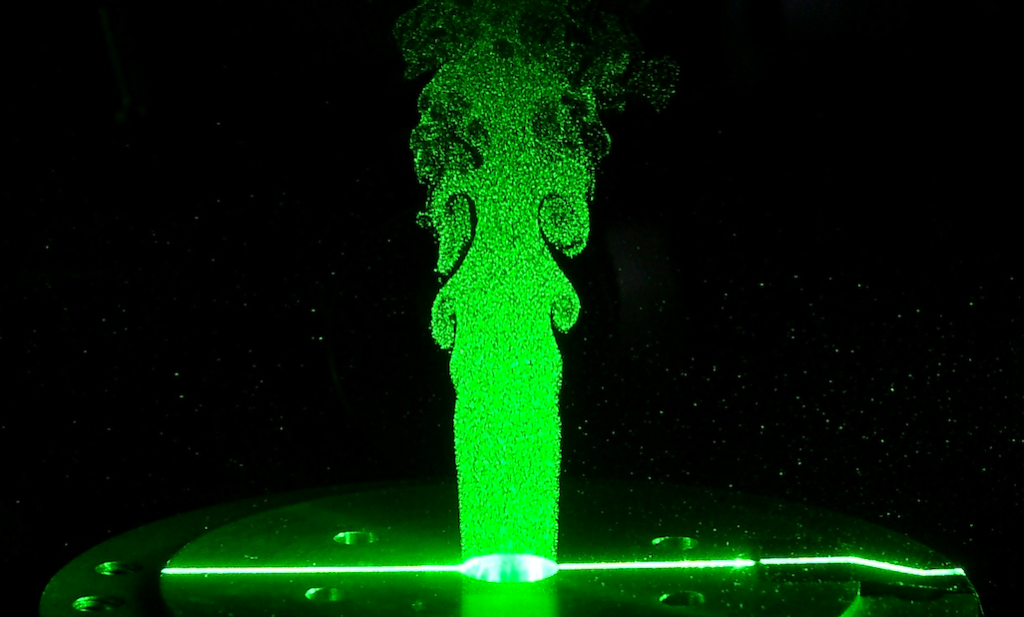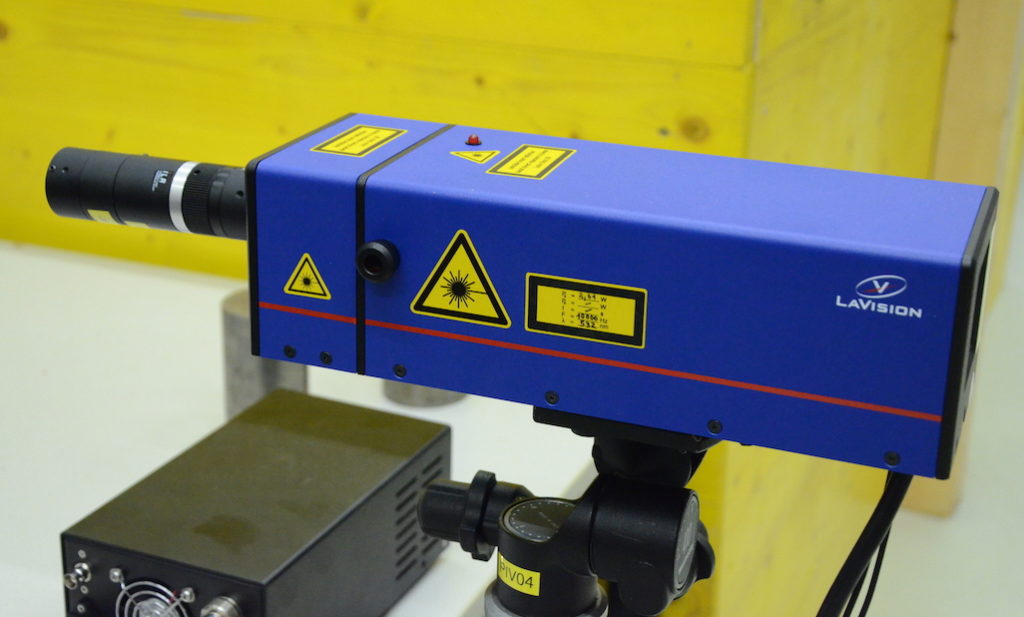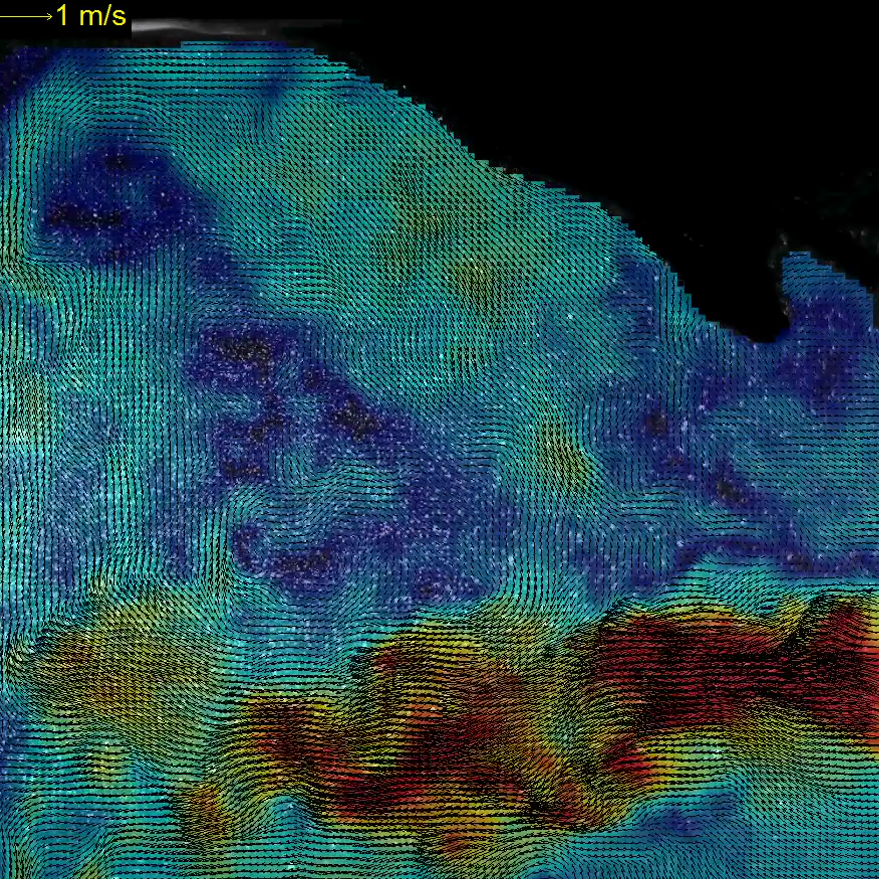Particle Image Velocimetry (PIV)



Wie funktioniert PIV?
Beim PIV Verfahren wird die Strömung mit einem Laser und geeigneten Tracerpartikeln visualisiert. Dabei wird mit dem Laser eine Ebene der Strömung beleuchtet und mit einer oder mehreren Kameras synchronisierte Bilder aufgezeichnet.
Durch den Versatz der Tracerpartikeln zwischen den Aufnahmen kann mittels Korrelationsverfahren ein Vektorfeld der Strömung in dieser Ebene berechnet werden.
PIV kommt überall dort zum Einsatz, wo Strömungen großflächig ermittelt werden sollen. Die Methode ist nicht invasiv, setzt aber eine optische Zugänglichkeit von zwei Seiten voraus. Gemessen werden kann sowohl in Gas- als auch Flüssigströmungen.

Beispiel einer hochaufgelösten PIV Messung eines Wasserjets in der Nähe einer Ölschicht.